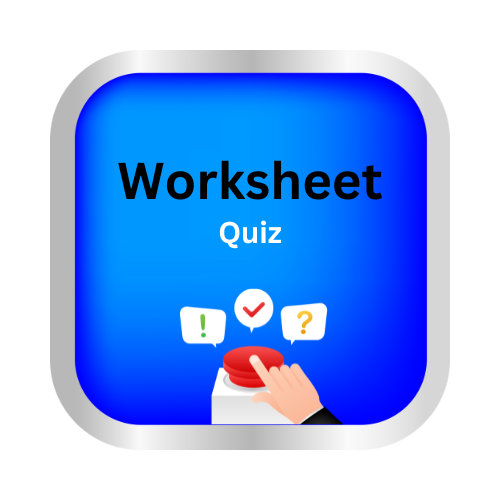Identify the narrative point of view
Key Notes :
1. Definition of Narrative Point of View:
- The narrative point of view refers to the perspective from which a story is told. It determines how the events are presented to the reader, what information is shared, and how much the reader knows about the characters’ thoughts and feelings.
2. Types of Narrative Points of View:
- First Person:
- The narrator is a character in the story, using “I” or “we.”
- Example: “I walked to the store, feeling nervous.”
- The reader experiences the story through the eyes and emotions of this character.
- Limited to what the narrator knows or feels.
- Second Person:
- The narrator speaks directly to the reader, using “you.”
- Example: “You walk into the room and notice the strange scent.”
- This point of view is rarely used in fiction and is more common in instructions or interactive stories.
- Third Person Limited:
- The narrator is outside of the story, using “he,” “she,” or “they.”
- The narrator knows the thoughts and feelings of only one character, usually the protagonist.
- Example: “She stared out the window, wondering what her future would be like.”
- Third Person Omniscient:
- The narrator is all-knowing and can describe the thoughts, feelings, and actions of all characters.
- The narrator has access to every character’s internal monologue and can provide more information than the characters themselves know.
- Example: “He didn’t know it yet, but she was already planning to leave.”
- Third Person Objective:
- The narrator only describes actions and speech, without access to any character’s internal thoughts or feelings.
- The story is told as though it were being reported by a camera.
- Example: “John ran out the door, his face tight with worry.”
3. How to Identify the Narrative Point of View:
- Look for pronouns used in the text (I, you, he, she, they).
- Determine whether the narrator has access to the thoughts and feelings of the characters or just describes their actions.
- Check whether the narrator has knowledge of only one character or of multiple characters.
4. Why Narrative Point of View Matters:
- It helps shape the reader’s connection to the story.
- It influences how much information the reader receives and when.
- It affects the emotional tone of the story. For example, first-person narration can create a more personal connection, while third-person omniscient can offer a broader, more detached perspective.
5. Examples of Different Narrative Points of View in Literature:
- First Person: “The Hunger Games” by Suzanne Collins (Katniss Everdeen’s perspective).
- Third Person Limited: “Harry Potter and the Sorcerer’s Stone” by J.K. Rowling (focusing mostly on Harry’s experiences).
- Third Person Omniscient: “Pride and Prejudice” by Jane Austen (offering insights into the thoughts of multiple characters).
6. Practice Identifying the Narrative Point of View:
- Read passages and identify the pronouns used.
- Consider how the narrator presents information about characters’ inner thoughts and emotions.
- Discuss how the point of view affects your understanding of the plot and characters.
Learn with an example
🤜 Which narrative point of view is shown in the passage?
Robert talked a good deal about himself. He was very young and did not know any better. Mrs Pontellier talked a little about herself for the same reason. Each was interested in what the other said.
From Kate Chopin, The Awakening
- first person
- second person
- third person
This passage shows a third-person omniscient point of view. The narrator describes events from the perspective of an outside observer, using third-person pronouns. The observer’s knowledge is not limited to what a single character knows or feels. Instead, the narrator reveals multiple characters’ thoughts or feelings.
Robert talked a good deal about himself. He was very young and did not know any better. Mrs Pontellier talked a little about herself for the same reason. Each was interested in what the other said.
🤜 Which narrative point of view is shown in the passage?
And Eddie and Oscar and Harold Murphy crept off toward the south. Doc and the lieutenant waited five minutes and then began circling west to block a retreat. Stink Harris and Paul Berlin stayed where they were. Waiting, trying to imagine a rightful but still happy ending, Paul Berlin found himself pretending, in a wistful sort of way, that before long the war would reach a climax beyond which everything else would seem bland and commonplace.
From Tim O’Brien, Going After Cacciato. Copyright 1978 by Tim O’Brien
- first person
- second person
- third person
This passage shows a third-person limited point of view. The narrator describes events from the perspective of an outside observer, using third-person pronouns. The observer’s knowledge is limited to what a single character knows or feels.
And Eddie and Oscar and Harold Murphy crept off toward the south. Doc and the lieutenant waited five minutes and then began circling west to block a retreat. Stink Harris and Paul Berlin stayed where they were. Waiting, trying to imagine a rightful but still happy ending, Paul Berlin found himself pretending, in a wistful sort of way, that before long the war would reach a climax beyond which everything else would seem bland and commonplace.
🤜 Which narrative point of view is shown in the passage?
I am an invisible man. . . . I am a man of substance, of flesh and bone, fiber and liquids—and I might even be said to possess a mind. I am invisible, understand, simply because people refuse to see me.
From Ralph Ellison, Invisible Man. Copyright 1952 by Ralph Ellison
- first person
- second person
- third person
This passage shows a first-person point of view. The narrator describes events from his or her own perspective, using first-person pronouns.
I am an invisible man. . . . I am a man of substance, of flesh and bone, fiber and liquids—and I might even be said to possess a mind. I am invisible, understand, simply because people refuse to see me.
let’s practice!

